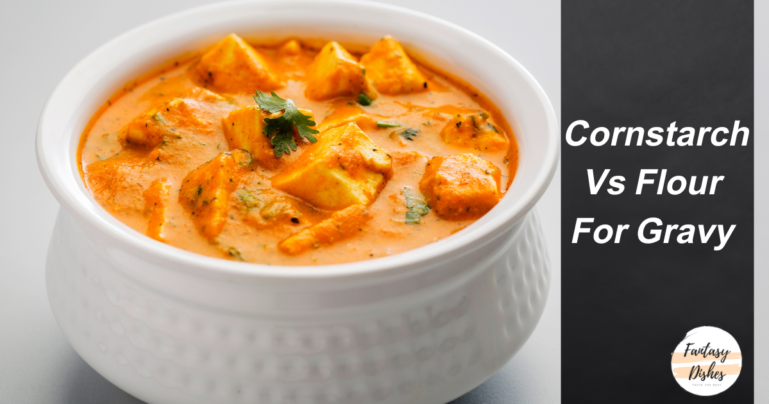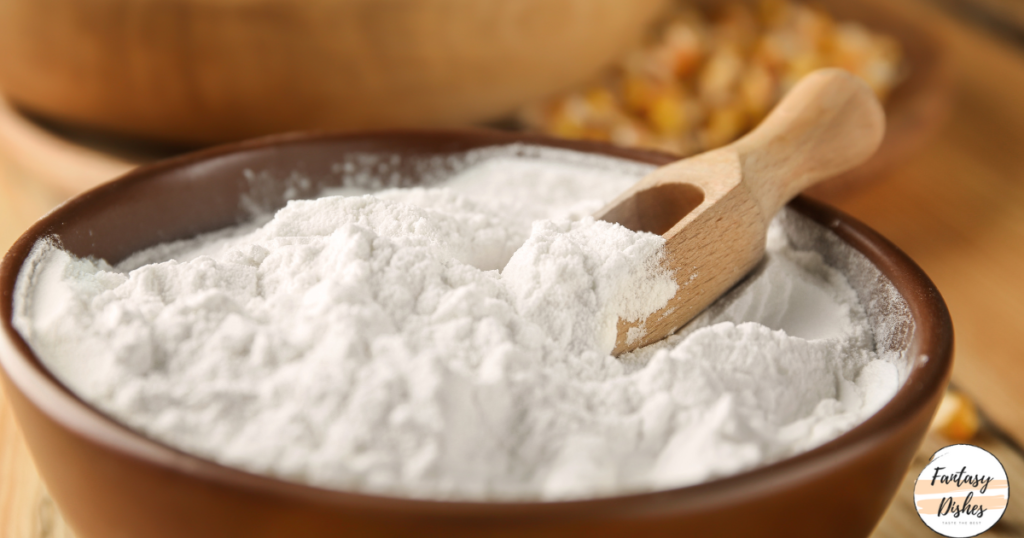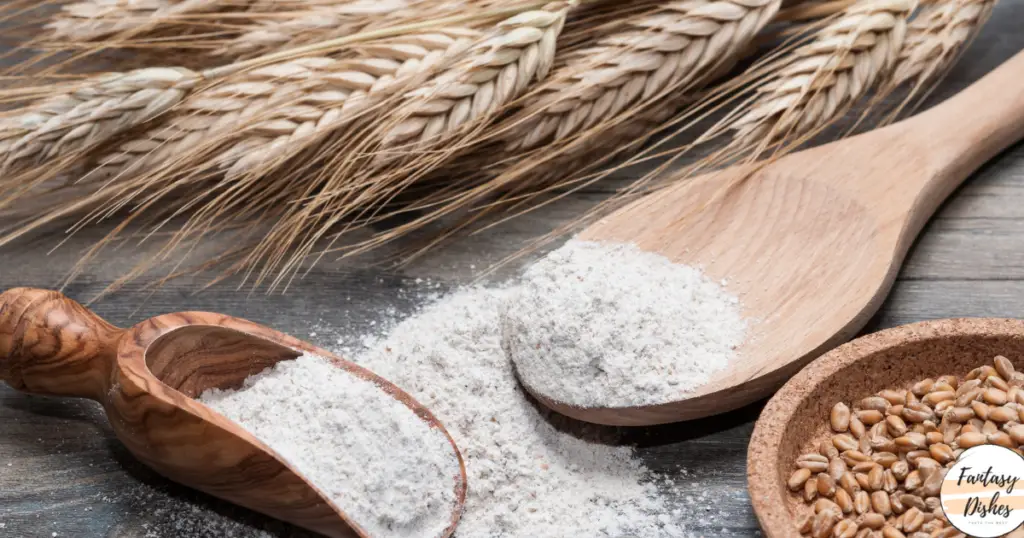Cornstarch Vs Flour For Gravy – Which One Is Better?

Is your gravy runny again for your chicken, beef, or pork? No worries! Either cornstarch or all-purpose flour can be your savior. You can make flour or cornstarch slurry for making your gravy in perfect thick consistency. Making flour or cornstarch slurry is quite easy and it builds a luscious taste of gravy. You can use any of those, both are ideal for gravy as your preference. However, if you’re a health concerning person then use flour for gravy. Flour has a better nutritional value compared to cornstarch.
As soon as you notice, your gravy is runny and isn’t in perfect consistency. Put the pan aside and begin to make the thickening agent mixture. You may wonder which one will be best for you. Don’t bother as now I’ll elaborate on both ingredients and how to use them. So, let’s get started.
Is Cornstarch & Flour the Same?
No, they aren’t the same. Though both of them are thickeners yet they’re quite different. The basic difference is, cornstarch comes from Corn and flour comes from wheat. Cornstarch is a pure starch whereas flour is a complex mixture of protein, fat, and even a bit of sugar.
Both of these ingredients are very suitable to thicken your gravy. However, cornstarch is completely starch without any gluten, so it’s more effective than flour. In flour gluten is present, so you’ll need twice the amount of flour than cornstarch to thicken your gravy.
Do You Thicken Gravy With Flour Or Cornstarch?
I used both of these two to thicken my soup or gravy. The result was pretty similar. So, you can use either gluten-free cornstarch or all-purpose flour. I’ve used multiple ways to thicken my gravy and these two were the easiest and simplest.
You can take either cornstarch or flour with water, mix it and pour it into the gravy. Simmer it for a while and you’ll get your desired thickness.
Always remember that, if you use cornstarch, don’t simmer or boil your gravy for too long, otherwise it’ll be thin again. Cornstarch has a property that it can lose its thickening power if it’s cooked for too long. Also, if you keep your cornstarch-used gravy in the refrigerator, then it’ll be thin too. If this happens, you’ll have to add more cornstarch slurry.
However, stay alert while making cornstarch or cornstarch chunks. Because wrongly prepared cornstarch may not work as effectively as it does generally.
For flour, before using it brown the roux a bit to get rid of the raw smell of it. Then, add the liquid to it. Browning at first adds more flavor and gets rid of the raw flavor of it. It’s a roux. Unlike cornstarch, flour can keep the consistency even if it’s cooked for a while or refrigerated. So, I always find using flour handy as it’s easy, simple, and tastes better. If we’ve any gluten-free guests coming over, then I use cornstarch.
How to Thicken Gravy With Cornstarch?

- Take 1 tbsp of cornstarch and mix it with 1 tbsp of water for one cup of gravy. You can customize the quantity as per your measurements.
- Mix the water and cornstarch very well and pour it into your gravy or soup.
- Simmer it on medium heat until the gravy thickens and bubbles show up.
- Cook for two more minutes to neutralize the taste of cornstarch. Don’t overcook the mixture as it can make the gravy thin again.
How to Thicken Gravy With Flour?

Unlike cornstarch, it’s a bit cloudy if you use flour. But the taste is fabulous and creamy! It’s a roux. Let’s see how to make it-
- Roux is a mixture of equal parts of fat and flour. As a fat, you can use butter, oil, pork fat, or any roasted meat dripping.
- Add 1 part of butter or fat to the skillet and melt it on medium heat.
- Then, sprinkle 1 tbsp of the flour in it and stir it.
- Stir and cook the mixture very fast with medium heat. Constantly stir it with the wooden spoon.
- Cook it for 10-15 minutes and you’ll get a brown or mahogany-colored roux. Be careful as if you stop stirring it can be burnt under the pan.
Cornstarch VS Flour For Gravy – Which One Is Better?
It completely depends on your preference. I’ve shown you all the processes and conditions. The choice is now totally up to you. Both are fantastic, add flavor to food and thicken your gravy. If you use cornstarch slurry, It’s very quick and adds a very shiny texture to your gravy. If you use flour, then it makes your gravy heavy, tasty, and creamy. And if you are looking for something good for your health then obviously use flour for gravy.
Before moving on to the next segment suggesting you another confusing query – Sweet relish vs Dill relish for Hotdog
How to Thicken Gravy Without Flour Or Cornstarch?
You can thicken your gravy without flour or cornstarch. Here are the ways you can use it-
1. Arrowroot
It’s a gluten-free substance that is popular to substitute flour or cornstarch. You can use it just like cornstarch, make a slurry and pour it into the gravy.
2. Potato Starch
Another gluten-free gravy or soup thickener. Add 1 tbsp of starch with 2 tbsp of water and make a slurry. Pour it into the gravy and simmer for a while to get the desired thickness.
3. Pureed Veggies
One of the smartest ways to thicken your gravy. Roast any kind of vegetables like potato, beet, carrot, or parsnip. Make a puree of it in a blender and stir it into your gravy until it’s completely mixed. It adds flavor and nutrition to your gravy.
Bottom Line
So, hopefully, you are now clear between cornstarch vs flour for gravy.
So, here are all the methods and ways to thicken your gravy or soup. You can use either flour or cornstarch as the process in your gravy to attain the desired thickness. Have a hearty, creamy and tastier meal with your family! Enjoy!
References
